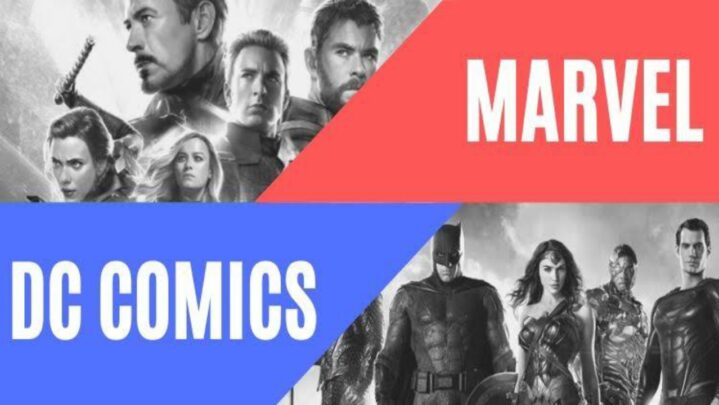If you ever get into a debate about the titans of comic books and superhero movies, you will almost certainly come across a debate about their two leaders – Marvel vs. DC. It’s a bit of an alternative fact that these two are in a bitter rivalry. Arguing that they are both the same is one of the most effective ways of excluding oneself from the discourse.
To avoid such ridicule, here’s a look at the differences between Marvel and DC – and how to avoid mixing the two without having to read years of comics.
1. Origin of DC and Marvel
DC was first known as “National Allied Publications” when it was founded in 1934. NAP merged with “Detective Comics Inc” later on. It was renamed “National Comics” after the linked “All-American Publications.” The comic book behemoth didn’t alter its name to “DC Comics” until 1977. Detective Comics were detective stories inspired by the noir criminal genre.
“Marvel,” initially published in 1939 by Timely Publications, was a series of stories starring The Human Torch and Captain America, who was one of Marvel’s few genuine survivors at the time. Due to declining sales, Marvel underwent a major reorganisation, changing its name from “Timely Publications” to “Atlas Magazines.” However, it was not until the 1960s that it was given its current moniker, “Marvel Comics.”
2. Overview of theme
Superheroes were reimagined by DC as modern-day Greek gods — superhuman fighters born in exceptional circumstances that elevated them above ordinary humanity. Great heroes with abilities far beyond those of ordinary mortals who believe in doing the right thing, protecting the innocent, and exemplifying the human condition.
Marvel dipped on a staple of classic science fiction and ushered in a bizarre and fascinating world. A glimpse into the unusual, a world filled with flawed men and women who are just like you and me. They fight to do the right thing, balancing the mundane with the extraordinary. And, having been touched by the strange, their enormous power comes at a high price.
3. Realism
Fans can “identify” with Marvel characters since they have common human problems. Seeing damaged teenagers like Peter Parker or cancer-stricken Wade Wilson gain superhuman abilities provides a sense of realism and hopefulness. Peter Quill has daddy issues, while Tony Stark has an alcohol problem. Marvel’s heroes are also from Earth, and they have extraordinary abilities as a result of technology gone bad, making their stories more believable.
DC, on the other hand, presents a fantastical, far-fetched universe. Well, there’s Batman, who deals with everyday criminals in his city, but most heroes are aliens, sea gods, or super-geniuses that, let’s face it, aren’t accessible to us and are more respectable in an unreal sense.
4. Character background
Although both series include a diverse cast of characters with incredible or tragic histories, only the backgrounds of many of DC’s heroes are noteworthy. Before their mishaps, most of the Doom Patrol celebrities Wonder Woman, Aquaman, Raven, Hawkgirl, and even Starfire were all aristocracy, if not direct descendants of gods.
Marvel’s main protagonists are far more likely to be ordinary people. Steven Strange was just a top-class neurosurgeon, Luke Cage was a pimply teenager off the streets, Bruce Banner was from a conventional but terrible family, and Peter Parker had one of the most unremarkable adolescent lives.
5. Movies
Christopher Nolan’s ambition to take Batman in a more serious and gritty direction, more akin to a crime noir than Joel Schumacher’s crazy aesthetics, set the tone of this era of DC films. Then there’s Zach Snyder’s Man of Steel, which attempted to establish a DC universe that felt similar to Christopher Nolan’s Batman trilogy but fell short.
Following Snyder’s departure after Justice League, this impact faded, and in came the magnificent Aquaman film and Wonder Woman, both of which had a serious and darker tone than their Marvel counterparts. The Joker, which was released in 2019, was DC’s darkest and most terrifying film.
Kevin Fiege’s career path at Marvel Studios was a rise up the corporate ladder. While “auteur” directors like Nolan, Schumacher, and Snyder created the tone in their way, Feige used his time at Marvel to build a setting that was more closely matched with the comics.
There’s a sense of wonder (DC has “fun,” but not nearly as much as Marvel), an air of innocence, and even cheerful music (Guardians of the Galaxy) and swear language (Deadpool) to make it incredibly welcoming to all types of fans.
DC films were known for being dark, serious, and gritty, but Marvel films were known for being lighthearted, colourful, and engaging for both children and adults.
Keep reading successyeti.com.
Also Read: 6 Finance Degree Jobs That Are Quite Popular





